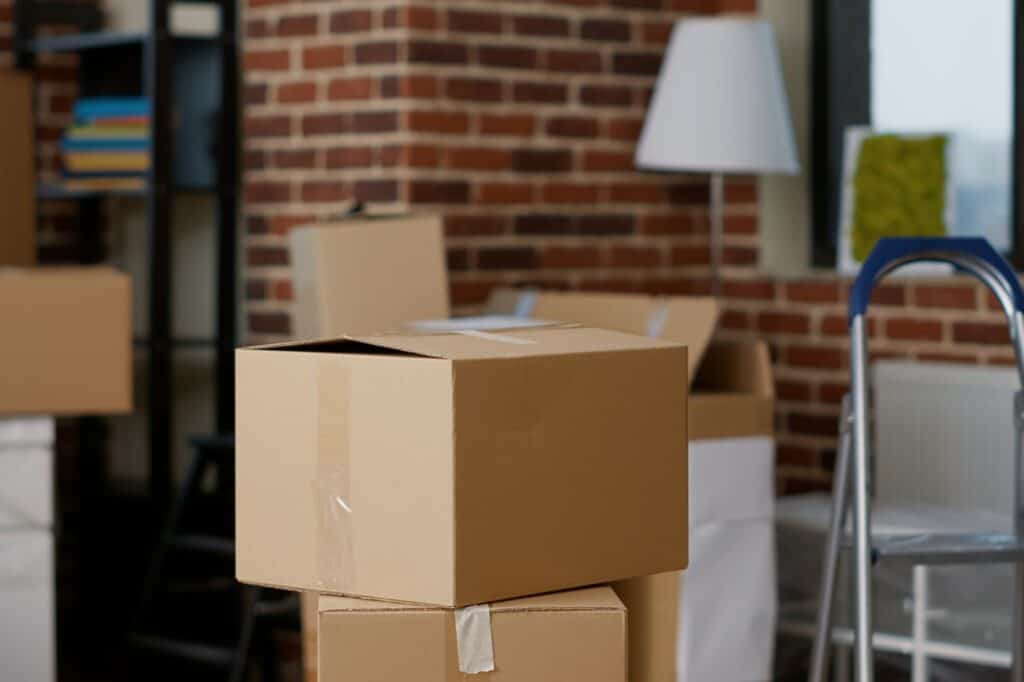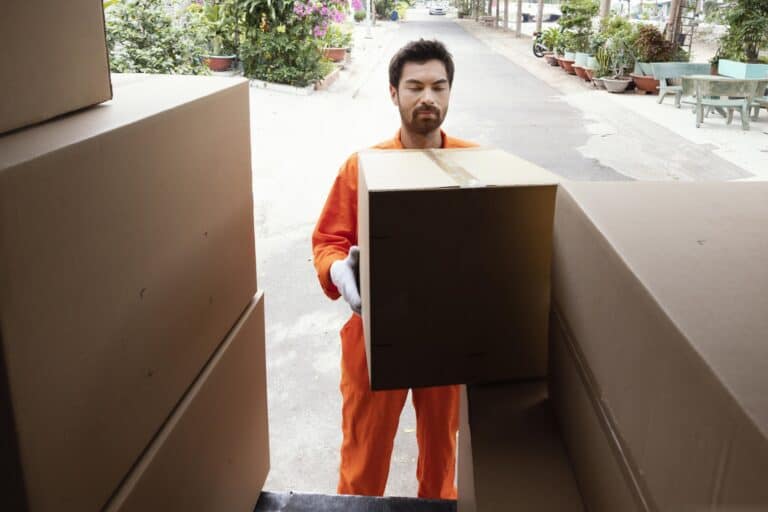If you’re facing an upcoming move in Hackney, you’re likely bracing for the fees listed on your quote. But are you aware of ‘what are the hidden costs in home removals services’ that could silently swell your total expenditure? We’re here to shine a light on those sneaky extra fees like parking permits or last-minute shuttle services that can take you by surprise. With this comprehensive guide, you’ll be able to navigate through your moving costs with clarity and avoid any unwelcome financial shocks. Let’s identify and prepare for these hidden expenses together.
Key Takeaways
- It’s essential to consider all potential hidden costs associated with home removals to prevent budget overruns, including packing materials, special handling charges, access-related surcharges, and unexpected service fees.
- Removal services pricing is complex, involving variables such as home size, distance, belongings’ volume, and additional services like temporary storage or insurance. Detailed scrutiny of removal quotes is crucial to uncover any hidden fees.
- To secure your finances and possessions during a move, implement cost-saving strategies such as decluttering and scheduling during off-peak periods. Additionally, ensure you have adequate valuation coverage through transit insurance.
Unveiling the Concealed Expenses of Moving House
The hidden costs of moving house can sneak up on you faster than a cardboard box can buckle under the weight of too many books. Make sure to uncover these additional removal costs that don’t always make it into the initial quote from your removal company. Some examples of hidden costs to consider are:
- Packing materials (boxes, tape, bubble wrap)
- Moving insurance
- Storage fees
- Cleaning fees
- Utility connection fees
- Pet transportation fees
- Parking permits
- Gourmet coffee to fuel your sorting spree
Thinking beyond the basics will help you budget more accurately for your move.
Whether it’s the added expenses of packing materials or the unforeseen fees that arise from last-minute moving day challenges, we’re here to break down these stealthy budget busters. Once we’re done, you’ll clearly know what to anticipate, so your moving costs don’t balloon beyond the size of your new living room.
Packing Materials Overlook
Ever started a packing session with a few boxes and a roll of tape, only to end up on an emergency run to the store for more supplies? You’re not alone. Home movers frequently underestimate the sheer volume of packing materials required to safeguard their worldly possessions. This oversight can send you sprinting for additional bubble wrap and packing paper, inadvertently inflating your moving budget.
Being the foundation of any relocation, packing requires special attention. Opting for a full packing service or choosing to self-pack can greatly sway your removal costs, and we’ll explore just how much impact these decisions have in the upcoming sections.
Special Handling Charges
The grand piano in your living room and the antique vase from your grandmother may add character to your home, but they also add complexity – and cost – to your move. Special handling charges are the extra costs that accrue when moving items that demand tender loving care or the use of specialist equipment. Whether it’s a piece of art that needs custom crating or a hefty heirloom requiring additional manpower, these items can significantly bump up your bill.
Moving forward, we’ll dig into the subtleties of removal services and the factors that influence their pricing, including additional removal services and other necessary extra services.
Access-Related Surcharges
Imagine the removal truck rolling up, only to find that it can’t squeeze past the gnarled oak tree guarding your driveway. Scenarios like this can trigger access-related surcharges, with additional costs for shuttle vehicles or extra manpower to navigate tricky terrains.
Be it a tight city alleyway or an isolated country path, hurdles in reaching your destination might result in additional cost for a smaller shuttle vehicle to transport your stuff to the main truck. In the following sections, we’ll reveal how these and other unforeseen circumstances can reshape the removal costs landscape.
The Truth About Removal Services Pricing
As we delve further into the strategies of removal firms, we discover that pricing involves more creativity than exactness. The cost of your move is a puzzle pieced together by:
- the size of your abode
- the distance to your destination
- the volume of belongings you’re taking with you
- the size of the moving vehicle
- the time spent on packing
- the number of crew members required
- the variable costs of packing materials
The intricacies don’t stop there.
And let’s not forget about fluctuating fuel costs, overnight stays for the removal team, and VAT considerations. While we break down the elements that contribute to the final cost, you’ll learn how to scrutinise removal quotes meticulously, ensuring not a single hidden cost slips by, including the average removal cost and average removal costs.
Service Level Variance
The degree of packing service you select can be a game-changer for your house removal costs. Here are some options to consider, keeping in mind the average house removal cost:
- Full packing service: This option is convenient but can be more expensive. For a cosy 2-bedroom house in Hackney, it might cost around £900.
- Self-pack: If you’re willing to roll up your sleeves and pack yourself, you could save around £300.
- DIY approach: This option requires more effort but can be cost-effective. For a 3-bedroom home, the difference between a full service and the DIY approach can be as much as £300.
It’s a balancing act – weighing the convenience against the cost.
If you do opt for additional packing assistance, anticipate an hourly rate that can quickly accumulate to a sizeable fee. Yet, for many, peace of mind and saved time are worth the investment. However, remember that going the self-pack route can translate into significant savings, a notion we’ll revisit later when discussing cost-saving strategies.
Temporary Storage Snags
Timing is everything, and sometimes the stars don’t align perfectly between vacating your old place and stepping into the new. Enter temporary storage – a potential hidden cost you may not have inked into your budget. The price tag attached to storing your possessions is swayed by the duration and the unit’s size, not to mention the security measures in place to keep your items safe.
It’s not just about finding a space to stash your stuff; you’ll want to ensure your belongings are monitored and insured while they’re in limbo. While investigating the extra services provided by removal firms, we’ll understand how storage services and temporary storage options can influence your move’s total cost.
Cancellation and Rescheduling Fees
Flexibility may be a virtue, but in the world of house removals, it comes at a price. Changing your moving date, particularly during peak times like bank holidays, can incur hefty costs due to heightened demand. And who would’ve thought that a delayed house move could become more expensive than a delayed flight? These additional costs for longer moving jobs can quickly add to your final tally. While we all hope for a smooth move, it’s wise to inquire about potential extra charges for overruns to protect your wallet from unexpected turbulence.
Later, we’ll talk about how properly scheduling your move can lead to potential savings and help you keep a tab on these and other concealed costs.
Insurance and Protection Costs Uncovered
Packing up your life involves more than just boxes and tape – it’s also about safeguarding your treasures along the way. Most reputable removal companies will offer transit insurance as part of their package, but don’t let the security blanket lull you into complacency. The devil’s in the details, and understanding each company’s transit insurance policy is critical to ensure you’re not left clutching at straws if something goes awry.
For those treasured items with a value that transcends monetary worth, you may need to consider additional insurance to fully protect your assets. While revealing hidden insurance costs, you’ll understand the importance of carefully studying policy details and filling any coverage gaps before your items start their journey.
Transit Insurance Details

When it comes to transit insurance, it’s not just about checking a box; it’s about checking the right box. These policies are designed to defend against the dreaded trio of theft, loss, or damage while your goods are in transit. Under an all-risks policy, you’re covered up to the full limit, barring any excess that applies. Selecting the appropriate coverage limit is tantamount to safeguarding your investment; skimp on this, and you could be paying out of pocket for any mishaps.
As we proceed, we’ll delve into the often-overlooked aspect of valuation coverage and how ensuring adequate protection can prevent financial heartache in the aftermath of a move.
Valuation Coverage Gaps
Insurance policies come with their fair share of fine print, and within that fine print lie the limitations that could spell trouble. Payout caps, which limit reimbursement per item, can result in woefully inadequate compensation for your prized possessions. If your move includes items of significant value, basic insurance might leave you exposed, necessitating a look at more comprehensive policies for full peace of mind. It’s a delicate dance, balancing coverage and cost, but one that’s essential to perform to ensure your move doesn’t become a financial fiasco.
Next, we’ll turn our attention to the often-neglected post-move costs that can catch many an unprepared mover off guard.
Post-Move Expenses to Anticipate
The final box has been unloaded, but the journey’s not over yet. Post-move expenses are like the encore at a concert – sometimes unexpected, but always part of the show. From the potential need for a hotel stay if your move spans multiple days to additional costs for babysitting, pet sitting, or even removal company waiting fees, the expenses can continue to stack up even after the last box is in place.
And let’s not forget about the practicalities of settling in: higher food bills while your kitchen is still a maze of boxes, initial setup costs for utilities, or the fuel for that long drive to your new abode. As we explore these post-move considerations, keep in mind the potential need for professional cleaning services, which we’ll discuss in the next section.
Professional Cleaning Service Requirements
Whether due to the condition of your new home or the fine print of a tenancy agreement, professional cleaning services might be on your to-do list – and your to-pay list. The cost of having your previous or new abode professionally cleaned can sneak up on you, adding an unexpected layer to your moving expenses. Cleanliness may be next to godliness, but it’s also adjacent to added costs in the realm of removals.
Moving forward, we’ll discuss the extra cost of hiring unpacking services to assist you in settling into your new cosy abode.
Unpacking Services
The dust has settled, and it’s time to turn a house full of boxes into a home. Some removal companies extend their services beyond the move itself, offering to unpack your belongings for an added fee. While the thought of having someone else arrange your kitchenware might be appealing, it’s essential to budget for this extra helping hand.
Some removal companies extend their services beyond the move itself, offering to unpack your belongings …
While assembling the complete financial outlook of relocating, bear in mind that it is not just about the journey from A to B – it also involves comfortably settling at point B without straining your finances.
Comparing Quotes: Hidden Fees to Watch For
Armed with knowledge, you’re now ready to play the field and compare removal quotes like a pro. It’s recommended to gather at least three written quotes from reputable companies to ensure you’re getting a fair deal. Customer reviews and service similarities between quotes are your compass in this quest, guiding you to the best value for your move. But beware: the path is riddled with potential hidden costs, from waiting charges to unforeseen access difficulties.
Additional services, mileage costs, and VAT considerations are just some of the hidden fees to watch out for when comparing quotes. While analysing the subtleties of these comparisons, we’ll also investigate possible discrepancies in volume estimates and situations requiring a shuttle vehicle for transport.
Discrepancies in Volume Estimates
An underestimated inventory can quickly unravel even the best-laid moving plans. Failing to accurately gauge the volume of your belongings can lead to a domino effect of increased costs, as more packing, resources, and even multiple trips may become necessary. As you solicit quotes, ensure the volume estimates are accurate to avoid a last-minute scramble that could inflate the cost of your move.
In the next subsection, we’ll navigate the scenarios where shuttle vehicles come into play and how they impact your moving budget.
Shuttle Vehicle Scenarios
Certain landscapes demand a different kind of vehicle agility. When the main moving truck can’t quite reach your front door, a shuttle vehicle becomes the relay runner of your move. Negotiating steep driveways or navigating narrow urban streets often necessitates this smaller transport counterpart, leading to additional costs for vehicle rental and labour. In these instances, the secondary vehicle becomes an essential, albeit unexpected, player in your moving journey, adding another layer to the financial tapestry of your house move.
With an eye on the road behind us, let’s shift gears and look at how you can take the wheel to save money during your move.
Cost-Saving Strategies for Your Move

Strategy is key when you’re looking to keep a tight rein on your moving budget. With a few clever strategies, you can cut unnecessary expenses and navigate through your move without denting your finances. Decluttering, for example, not only simplifies your move but also reduces the load – and thus the cost – of transporting your goods. By maximising the use of items you already have for packing, like blankets and clothing, you can minimise the need to purchase additional materials.
Booking your removal services during off-peak seasons can also lead to lower charges, as demand dips and many removal companies become more amenable to discounts. These are just a few avenues for savings, and as we delve into the specifics of decluttering and timing your move, we’ll uncover even more cost-cutting gems.
Decluttering Before the Move
Before the moving trucks roll in, take a moment to assess every item in your home. Decluttering is the strategic starting block for a cost-effective move. By selling or donating items, you decrease the volume of belongings to be transported, which can lead to lower moving costs. Not only does this reduce the amount of required packing materials, but it may also allow for a smaller moving truck or fewer containers, further driving down costs. This reduction in volume can have a ripple effect on your moving expenses, underscoring the importance of a pre-move purge.
In our next subsection, we’ll explore the distinct advantages of coordinating your move during off-peak times, which can offer more than just financial benefits.
Off-Peak Moving Advantages
Choosing when to move can be just as impactful on your budget as deciding what to move. Here are some tips to help you save money:
- Opt for an off-peak move, such as in the quieter months of January or September, to get more wallet-friendly rates.
- Consider moving on a Sunday, as it typically offers savings over a Tuesday move in the UK.
- Embrace flexibility, as it can open the door to discounts and special rates that removal companies offer during less busy periods.
TIP
By aligning your move with off-peak move date, you not only save money but may also enjoy a smoother, less rushed moving experience.
Summary
Navigating the labyrinth of house removal costs demands both vigilance and knowledge. From the initial quotes to the unpacking at your new abode, there are numerous hidden costs that can catch you unawares. By understanding the nuances of removal service pricing, transit insurance, and the additional expenses that crop up before and after the move, you can steer clear of financial surprises. Embracing strategies like decluttering and moving during off-peak times will help you keep extra costs to a minimum, ensuring a move that’s as stress-free as it is cost-effective. Consider this blog post your map through the winding paths of moving house – a guide to keeping your hard-earned money where it belongs: in your pocket.
Frequently Asked Questions
What are some unforeseen charges I might encounter during a move?
You may encounter special handling fees, access-related surcharges, shuttle vehicle rentals, additional packing materials, and waiting fees during a move. Be prepared for these potential costs to avoid surprises.
How can I save money on packing materials?
To save money on packing materials, declutter before your move, use household items for packing, and purchase supplies in bulk or find free boxes from local stores. This will help you cut down on packing costs.
How does the timing of my move affect the cost?
Moving during off-peak times, such as weekdays or non-holiday periods, can help reduce costs by potentially securing lower prices and discounts from removal companies.
What should I look for in a transit insurance policy?
When reviewing a transit insurance policy, ensure it covers theft, loss, and damage to goods while in transit and look for all-risks coverage and proper coverage limits to avoid being underinsured for valuable items.







